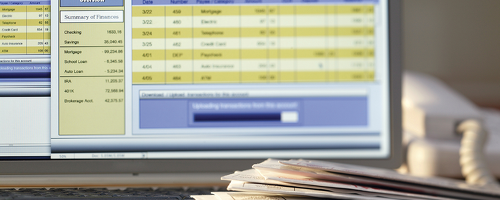What you need to do NOW!
Preparing to file your tax return is a great time to ensure you have proper documentation to substantiate your tax deductions. This is important as many banks start deleting online documentation that is over one year old.
Background
Two things have happened over the past ten years that have greatly reduced the ability to have a canceled check as proof when the auditor comes calling. The first is the advent of online bill paying services. The second is a regulation commonly known as Check 21. With online bill paying, you pay a bill via an online banking service. Your only receipt is often just an entry in your checking account. With Check 21, the law allows banks to digitally capture the check and then destroy the paper copy without returning it to you. So what do you do if you need proof that you paid for a tax deductible item?
Some Tips
- Know your bank. Understand what your bank keeps and for how long. This includes digital statements and digital copies of checks (both front and back). Understand if there are any fees charged if you need to request copies of payments.
- Retain copies of all bank statements. Review your records to ensure you have copies of all monthly bank statements. This is often the starting point for an IRS agent that wants proof of payment, so it should be yours as well. These copies may be in either paper or digital format. Download online copies of your statements and place them in a password protected file.
- Collect copies of tax related proof of payment. Go through your statements and mark the payments that will, in all likelihood, be used as a tax deduction. Make sure you have copies of the front and back of each of these payments. If you do this work now, the copies are often still available online for no fee. Even online bill payments often have a digital copy that can be used.
- Get independent acknowledgements. If you have larger payments you should also make sure you have independent acknowledgement from the merchant or organization to substantiate the deduction. This is true for charitable contributions of $250 or more, and any business or medical expenses.
While having the traditional proof of an expenditure is now harder to come by, the IRS understands that approved technologies are changing the type of substantiation available for them to review. By being on top of this documentation each year, you can save yourself a lot of headaches should you ever need to prove your deductions.

